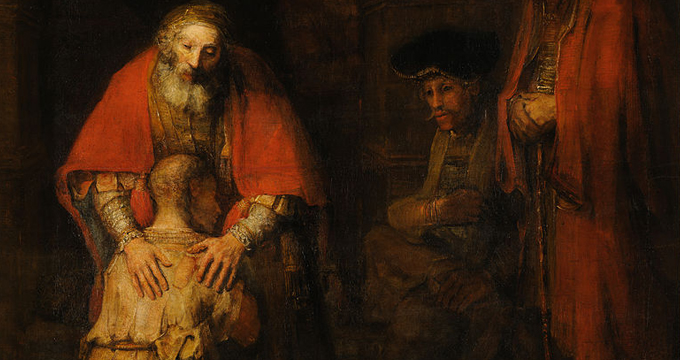 Chad Harrington continues with Part II of his post asking, “Does God have emotions?” While recognizing that God’s emotions are too complex to fully understand, this week Chad Harrington attempts to paint the picture of God’s compassion.
Chad Harrington continues with Part II of his post asking, “Does God have emotions?” While recognizing that God’s emotions are too complex to fully understand, this week Chad Harrington attempts to paint the picture of God’s compassion.
—
In Part 1, I looked at God’s anger in Judges chapter 2 as one of God’s emotions. The other side of his emotions, however, is compassion. We tend to view God as one or the other—either angry or compassionate—depending our particular standing in life. Regardless of our perception, though, one thing’s for sure:
God cares.
This is evident throughout Judges 2, whether he’s upset about sin or hopeful about redemption—God cares about his people. His nose was burning with anger due to Israel’s sin, but then his attitude changes: “The LORD would be moved to pity by their groaning because of those who persecuted and oppressed them” (v. 18).
Just like the language of God’s anger in the OT is an external description of God’s emotions, so is the language of his compassion. The Hebrew idiom used to describe God’s anger is “the Lord’s nose burned.” This was a metaphor to describe God as a person. Hebrew writers did not use modern psychological terms of feelings to describe things like compassion and mercy. They used external descriptions, because they did not tend to separate people into parts like we do. So we can look at God’s nose to see his fiery anger, or we can look at his actions to find his heart-felt compassion. Such is the case in Judges 2.
The book of Judges portrays Israel as a group stuck in a bad cycle: sin, suffering, sorrow, and salvation, and God’s right in the middle of it. They would sin, experience suffering, cry out in sorrow, and receive salvation. Sound familiar? Yeah, they were human, too. The cycle of Israel at that point in history was continually to set to wash, rinse, and repeat. They had been in “great distress,” and God heard their cries of sorrow and acted.
God had compassion.
The people were suffering for their own sin, yet God felt compassion for them, so he sent leaders to save them. The word that sheds light on God’s emotions is the Hebrew “moved to pity” (NRSV). This word occurs 108 times in the Bible, and it is normally used in situations where something bad is happening and will continue to happen until someone intervenes. The person who changes the situation is no longer willing to put up with the evil or the pain or the sorrow, so they do something about it. In Judges 2, God was no longer willing to let his people suffer from oppression. Even though they got themselves into the mess, he was still willing to do something about it. God was literally moved by their situation. This gives us insight into God’s heart.
First, the same God who was angry at sin, shows compassion for his people. He cares so much about his people that no matter what they did, he still wanted to get them out of it. He quickly moves past their sin like a cloud, and allows his heart to be pricked by pity.
Second, his compassion moves him to action. He rescued Israel over and over again throughout the book of Judges, which lasted for years and years. Ultimately, though, his deep feelings moved him to send his son to us. He let his bowels of mercy spill over into billows of love, and that love changed history.
God can be moved to burning anger or to deep pity, but how can we reconcile these two aspects of God’s identity together? The key is God’s covenant. We don’t know to put two seemingly contradictory issues together—his wrath and forgiveness, his hatred of sin and love of sinner, or his blessings and curses—and we cannot fully grasp his nature because of our finitude. His covenant faithfulness, however, will give us immense insight to these binary opposites. Looking at God’s covenant will not only give clarity to God’s emotions, but will also give shed light on Rembrant’s painting featured in this series, “The Return of the Prodigal Son.” But that’s for Part 3, where we find God’s emotions at work in the Gospels.
—




One Response